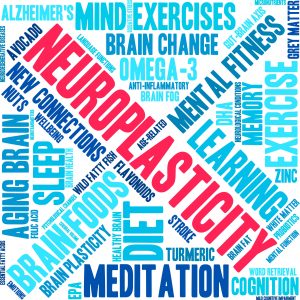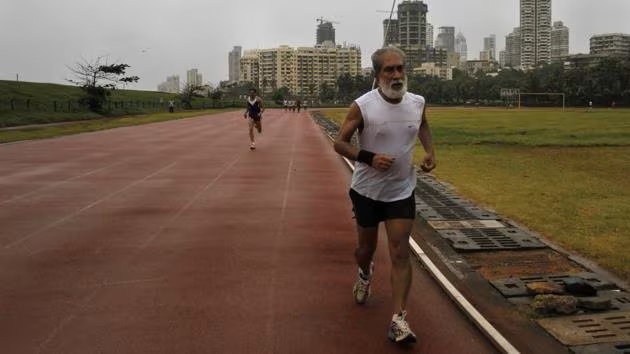Reading Time: 5 minutes
Physical activity isn’t just significant for your body’s wellbeing; its practice underpins our minds in remaining sharp.
We as a whole realise practising any movement, at any age is great for the body. Yet, did you realise every time you work out you strengthen your brain cells? The advantages of exercise, particularly high-impact workouts, emphatically affect cerebrum capability on different fronts, extending from the atomic to social level. As indicated by a review done by the Branch of Activity Science at the College of Georgia, even a twenty minute exercise routine boosts the brain’s data handling and memory capabilities.
Exercise in all its diverse forms, influences the mind on various levels. It increments our pulse rate, which siphons more oxygen to the mind. It likewise helps in the substantial release of brain chemicals, all of which take part in supporting and giving a feeding climate to the development of synaptic efficacy, neuronal connectivity and neuroplasticity.
Exercise promotes the mind’s flexibility by invigourating development of new associations between cells, significantly in the cerebral cortex. Studies at UCLA exhibited that exercise expanded development factors in the cerebrum — making it more straightforward for the mind to develop new neural associations.*
*(In research with rodents (rats and mice), there’s evidence that exercise increases the blood supply to their brains and promotes the growth of new neurons (adult neurogenesis) in the hippocampus, a brain area that is essential for learning and memory.)

According to a conduct viewpoint, a similar exercise stimulant has its impacts related with “sprinter’s high” found in people is related to a reduction in the brain’s stress chemicals. A review from Stockholm showed that the stimulant impact of running was likewise connected with more cell development in the hippocampus, a region of the cerebrum answerable for learning and memory.
Ways to pick the right exercise for you
 As a rule, whatever is really great for your heart is perfect for your mind.
As a rule, whatever is really great for your heart is perfect for your mind.
High-impact exercise is perfect for body and mind. Its benefits are twofold: Besides the fact that it further develops mind capability, it additionally doubles up as a “emergency treatment pack” on damaged synapses.
Exercise first thing in the morning spikes cerebrum movement and strengthens your response to mental anxieties until the end of the day. In addition, it expands assimilation of new data, and a better response to complex circumstances.
While hoping to switch around your work out, search for a movement that integrates coordination alongside cardiovascular activity, for example, a dance class.
If you like to work out by yourself in a gym, choose circuit exercises, which both rapidly spike your pulse, and continually divert your thinking mind.
Reaching a stopping point or intellectually depleted? Have a go at rebooting with a couple of hopping (jumping) jacks for your cerebrum improvement.
 Exercise your body, exercise your mind
Exercise your body, exercise your mind
For a really long time, we’ve had a suspicion that exercise might be great for the mind. In any case, presently, analysts are starting to comprehend the beneficial connection.
While we all know the advantages of ordinary physical activity in keeping our body mechanisms functioning optimally, there is expanding proof that exercise might assist our cerebrums with existential improvement. For a number of years, scientists have been studying and researching the impact that exercise has on cognition, memory, and visual responsiveness. As indicated by Richard Maddock, teacher of Psychiatry and Social Sciences at the College of California, Davis, “There is an extremely reliable finding that the mind works better after a workout.”
 Paradoxically, researchers haven’t exactly seen precisely why exercise appears to help our cerebrums.
Paradoxically, researchers haven’t exactly seen precisely why exercise appears to help our cerebrums.
That is, up until recently. In the last few years, various scientists have been creating innovations that permit them to gauge the impacts of vigorous movement on different parts of mind actions during exercise, and the outcomes have been exceptionally intriguing. Kate Wheeling has expounded on these new revelations at Standpoint Magazine’s site. The following are a couple of fascinating discoveries:
- Exercise increments cerebrum waves, expanding readiness. Utilising apparatuses that act on the electrical driving forces created by our minds, scientists have found that oxygen consuming activity makes our cerebrums produce cerebrum waves more often and with greater power, which results in many individuals feeling that they are more equipped and centered.
- Exercise sharpens visual aversion to our general surroundings. A few researchers at UC St Nick Barbara have been estimating the impacts of activity on the visual cortex, which assists people with seeing significant parts of our current circumstance and channelling out less significant “foundation commotion.” They found a positive connection between low-power cycling and the capacity to recognise explicit elements during exercise. Different specialists have announced comparable discoveries, proposing that when people participate in high-impact action, their visual discernments are keener.
- The cerebrum utilises exercise to assemble more synapses. Richard Maddock and his group found that a portion of the fuel the body produces during exercise is utilised by the cerebrum to make more synapses, which are the synthetics that transfer messages around the sensory system. Maddock proposes that exercise might restock the mind with fundamental synapses permitting it to perform more effectively. This may explain why exercise eases mental health conditions like sadness, depression, anxiety and stress.
Wheeling meticulously describes all of this, and gives further instances of how exercise further develops mind capability (counting that it might cause our cerebrums to seem more youthful).

By and large, the message is clear: Exercise is great for your cerebrum! It’s not a fix all, but the exploration is demonstrating areas of strength especially with regards to further developed cerebrum / centre, thought patterns, insight, memory, scholastic execution, and handling speed.
GLOSSARY:
THE CEREBRUM: The largest part of the brain, the cerebrum initiates and coordinates movement and regulates temperature. Other areas of the cerebrum enable speech, judgment, thinking and reasoning, problem-solving, emotions and learning. Other functions relate to vision, hearing, touch and other senses
COGNITION: The mental action or process of acquiring knowledge and understanding through thought, experience, and the senses.
CIRCUIT TRAINING: is a type of workout that involves rotating through a circuit of up to 10 exercises that target different muscle groups. Circuit training refers to how a workout routine is structured rather than a specific type of exercise.
NEUROPLASTICITY: also known as neural plasticity, or brain plasticity, is the ability of neural networks in the brain to change through growth and reorganisation. It is when the brain is rewired to function in some way that differs from how it previously functioned.
SYNAPSES: refer to the points of contact between neurons where information is passed from one neuron to the next. Synapses most often form between axons and dendrites.








